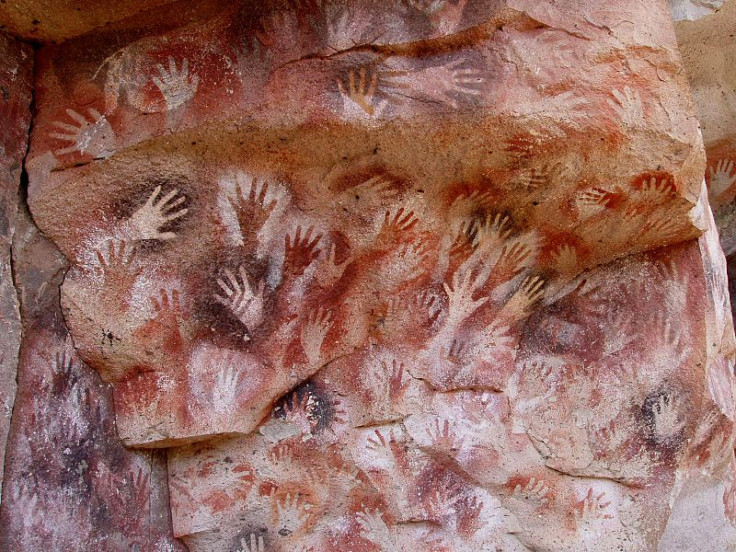Prehistoric Cave Artists In Europe Were Mostly Women, Ancient Handprints Suggest

The El Castillo cave in Cantabria, Spain, contains Europe’s earliest cave paintings. Nearly 40,000 years ago, prehistoric painters used red-brown pigments to depict animals like bison and deer on the cave’s walls. They also produced handprints by blowing the pigment through rough tubes and stenciling outlines of their palms.
New analysis of these ancient handprints suggests that, contrary to what archaeologists previously thought, Europe’s first artists were women.
According to research from Pennsylvania State University anthropologist Dean Snow, only 10 percent of the handprints on cave walls in Spain and France were left by adult males. Another 15 percent of them were put there by adolescent males. The remaining 75 percent of the handprints in Spain and France were left by females.
Why did archaeologists often assume men made the prehistoric cave markings?
"Male archaeologists were doing the work," Snow told NBC News. It was also assumed that, because most cave art depicted animals and hunters, its artists were males, as they were the ones out hunting.
Snow used research from John Manning, a British biologist who studied the differences in male and female hands, to determine if the handprints were male or female. Snow looked at the finger ratios of the handprints. Males tend to have a longer ring finger than index finger. Females’ fingers tend to be about the same length, or, if anything, their index fingers are a little bit longer.
Snow studied 32 stencils found in 11 caves in Spain and France. Using Manning’s research, Snow determined that 24 of the 32 stencils he observed were female.
To determine the sex of the person who left the handprints, Snow and his colleagues created images of the hands and then segmented them. Then they mapped points of interest on the hands -- the fingertips, contours, the valleys between the fingers -- and used computers to determine the geometric features of each hand.
The results of the study are published in the current issue of American Antiquity. The report is the culmination of a decade of work on the subject.
© Copyright IBTimes 2024. All rights reserved.






















